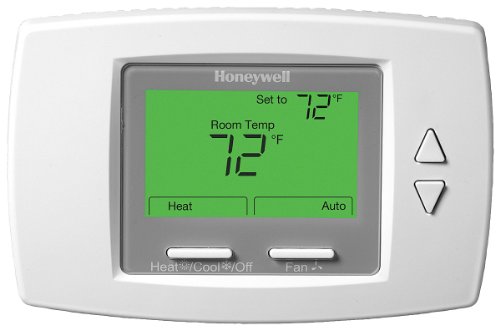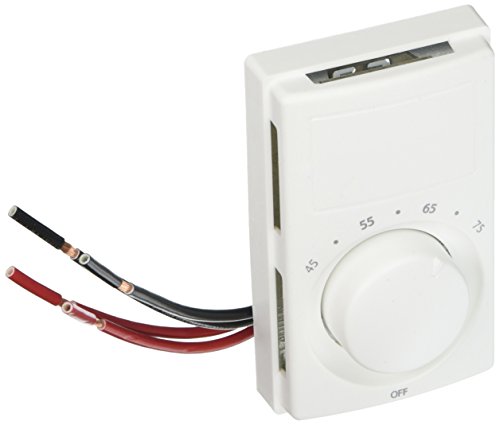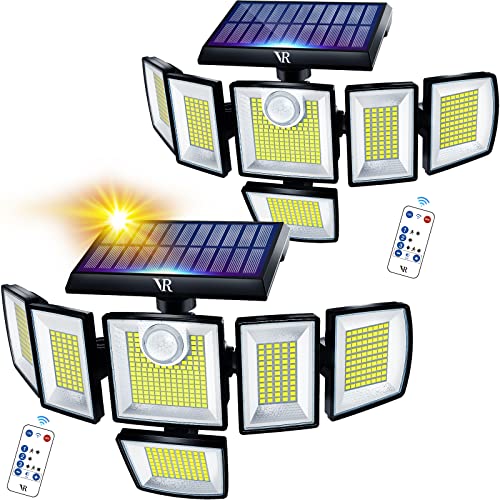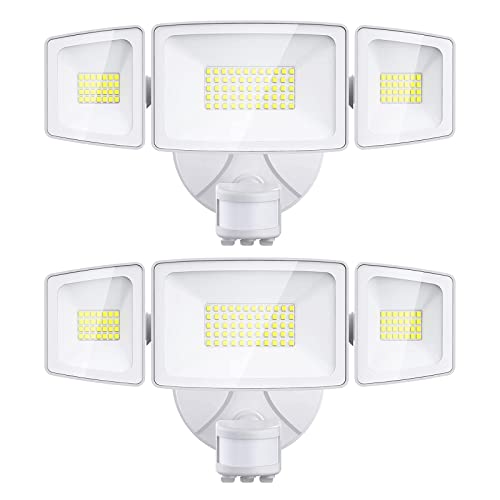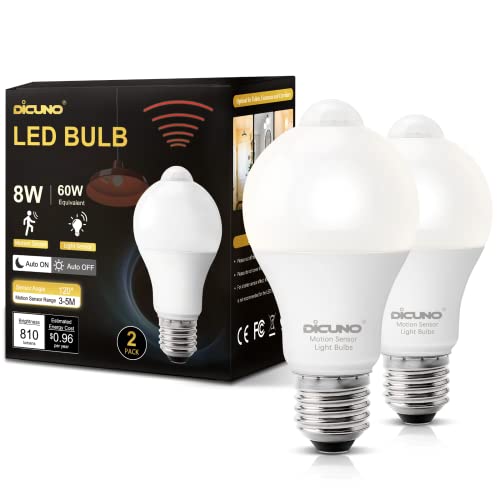10 Best Line Voltage Thermostat: In-depth Reviews
Abiodun Ayomide Dec 7, 2025 1:34 PM
When it comes to selecting a thermostat, consumers have many options. One common type of thermostat operates on line voltage. These thermostats regulate high-voltage heating systems, such as electric water heaters and baseboard heaters. In this article, we'll go over some of the considerations you should make before buying a thermostat that operates on line voltage.
Top Picks
Source: Amazon
Best Manual-Digital Control: Fan Coil Thermostat, Line Voltage,
Honeywell TB6575A1000 thermostat combines manual and digital controls with a glossy display for easy operation. It supports both 120V and 240V wiring, includes remote sensors for temperature and pipe monitoring, and offers BACnet MS/TP connectivity for integration with building systems. The wall-mounted design is compact and durable, making it suitable for residential or light commercial use.
Pros
- Dual control options
- Remote sensor support
- BACnet connectivity
- Clear digital display
Cons
- Battery not included
- Basic design
Most users appreciate the balance of manual control with digital functionality, especially when integrating into larger systems. However, some find the design too simple compared to more advanced smart thermostats.
Best WiFi Programmable: KING K902-B Hoot WiFi Line Voltage Smart Programmable Thermostat
The King Electric Hoot WiFi thermostat offers touchscreen control and app-based programming for convenient temperature management. It connects via Wi-Fi, supports residential 240V systems, and provides a modern LCD interface with backlighting. Compact and lightweight, it is designed for easy wall mounting and integration into smart home setups.
Pros
- Wi-Fi connectivity
- App control
- Programmable settings
- Modern touchscreen
Cons
- Corded power only
- Residential use limited
Users value the convenience of remote control and easy programming through the app. Some note that it is best suited for standard home applications and lacks advanced features found in higher-end smart thermostats.
Best Smart Integration: meross Smart Thermostat for Electric Baseboard
The Meross Smart Thermostat is designed for electric baseboard heaters, offering Wi-Fi connectivity and compatibility with Alexa, Google Assistant, Apple HomeKit, and SmartThings. It features app-based programmable control, a polished LCD display with backlight, and a compact, lightweight wall-mounted design. Certified for safety and cybersecurity, it provides reliable performance for residential heating needs.
Pros
- Wide smart home compatibility
- Programmable control
- Lightweight design
- Certified safety standards
Cons
- Corded power only
- Single-use for heating
Customers appreciate the seamless integration with multiple smart home platforms and the ease of programming through the app. Some mention that its functionality is limited to heating, making it less versatile than all-in-one smart thermostats.
Best Remote Sensing: Peco TF115-001 NEMA 4X Line Voltage Thermostat
The Peco TF115-001 thermostat is a rugged manual unit built for industrial and residential use. It operates on 24 volts with a wired connection and uses a mechanical knob for simple, direct temperature adjustments. Featuring remote sensing capability, it is designed for reliable performance in both indoor and outdoor environments.
Pros
- Durable design
- Remote sensing feature
- Simple manual control
- UL certified
Cons
- No backlight
- Limited smart features
Users value its straightforward operation and durability, especially in demanding settings. However, many note that it lacks the modern convenience of digital or smart thermostats.
Best Energy Saving: Honeywell TL8230A1003 Line Volt Thermostat
The Honeywell TL8230A1003 thermostat is built for electric baseboard heaters with programmable temperature control. It features a digital display with backlight, push-button operation, and a sleek modern design. Running on 240 volts, it is wall-mounted and engineered to improve heating efficiency while supporting energy savings.
Pros
- Programmable settings
- Energy-saving certified
- Clear digital display
- Modern compact design
Cons
- Corded only
- Basic control options
Customers appreciate its reliability, straightforward programming, and energy efficiency. Some feel it lacks the advanced smart connectivity found in newer Wi-Fi enabled models.
- 9.5
- BrandPECO
- 9.4
- BrandHoneywell
- Prime
- 9.3
- BrandMarley
- 9.0
- BrandLegacy
- Prime
- 8.8
- BrandColumbus Electric
- 8.7
- BrandRobertshaw
- 8.5
- BrandHoneywell Home
- Prime
Last update on 2025-12-07 / Affiliate links / Images, Product Titles, and Product Highlights from Amazon Product Advertising API
Suitability for your furnace
Before buying a line voltage thermostat, make sure it will work with your heating system. Line voltage thermostats are designed to work with high voltage heating systems like baseboard heaters and electric water heaters. If your furnace or heat pump operates on low voltage, a line voltage thermostat will not work.
Power output specifications
Line voltage thermostats are designed to control currents and voltages of a specific range. Before buying a thermostat, check its voltage and amperage ratings to make sure they match those of your heating system. If the thermostat isn't rated for the required voltage and amperage, it won't work and could even damage your heating system.
whether or not it can be programmed
Programmable and non-programmable line voltage thermostats are available. Programmable thermostats allow you to set different temperatures for different periods of the day. You may reduce your heating and cooling costs by turning down the thermostat when you are not at home or when you are sleeping. However, the temperature on non-programmable thermostats cannot be adjusted mechanically.
mechanized or electronic
Line voltage thermostats come in both mechanical and computerized forms. Digital thermostats provide more features and more accuracy than their mechanical counterparts. They provide a more precise means of setting and displaying the desired temperature. Mechanical thermostats, as opposed to digital ones, are less complicated and cheaper to operate. They are more reliable than electronic alternatives since they can't break.
Dimensions and form
There is a wide range of thermostats to choose from that use standard wall outlets. Before you buy a thermostat, measure the wall space where you plan to install it. It's also important to consider whether or not the thermostat's aesthetic fits in with the rest of your decor.
Price
The price of the thermostat is the final consideration. Line voltage thermostats can range in price from $20 to $200 or more. Getting the cheapest thermostat available can be tempting, but it's important to remember that you get what you pay for. A more expensive thermostat may be more dependable and have more conveniences.
Non-Programmable Thermostats
Non-programmable thermostats are the most basic type of line voltage thermostat. They have a fixed temperature setting that cannot be adjusted automatically. These thermostats are easy to use and do not require any programming, making them ideal for people who prefer simplicity.
Programmable Thermostats
Programmable thermostats allow you to set different temperatures for different times of the day. They can be set to automatically adjust the temperature based on your schedule, which can help you save money on your energy bills. Programmable thermostats can be further classified into 7-day, 5-2 day, or 1-day models, depending on the number of days in a week that they can be programmed for.
WiFi-Enabled Thermostats
WiFi-enabled thermostats allow you to control your heating system remotely using a smartphone app. This means that you can adjust the temperature from anywhere, at any time. WiFi-enabled thermostats also offer additional features such as voice control, energy usage reports, and compatibility with smart home systems like Amazon Alexa or Google Home.
Line Voltage Thermostats with Sensor Probes
Line voltage thermostats with sensor probes use a separate temperature sensor to measure the temperature in the room, rather than relying on the temperature at the thermostat itself. This allows for more accurate temperature control, especially in large or irregularly shaped rooms.
Line Voltage Thermostats with Double Pole Switches
Line voltage thermostats with double pole switches are designed to control heating systems that have two hot wires, rather than one. These thermostats have two switches that can turn both wires on and off, allowing for more precise control over the temperature.
Low Voltage Thermostats with Relays
Low voltage thermostats with relays are designed to control line voltage heating systems by using a low voltage signal to control a relay that turns the heating system on and off. These thermostats are ideal for people who want the benefits of a low voltage thermostat but have a line voltage heating system.
In conclusion, there are several factors to consider while shopping for a line voltage thermostat. Check the thermostat's voltage and amperage ratings, as well as whether or not it requires programming, to ensure it will work with your heating system. You should also consider whether you want a mechanical or digital thermostat, how big or small it will be, and how much it will cost. Taking these factors into account will help you choose a line voltage thermostat that will work well for your needs and provide dependable temperature control in your home.
Read More:
- The Best Programmable Thermostat of 2025
- 10 Best Alexa Enabled Thermostat Review
- Expert’s Choice: 10 The Best 4 Wire Thermostat Passed Our Test
- 10 The Best Thermostats On The Market We've Tested: In-depth Reviews
- 10 The Best Thermostat With Humidity Control We've Tested 2025


